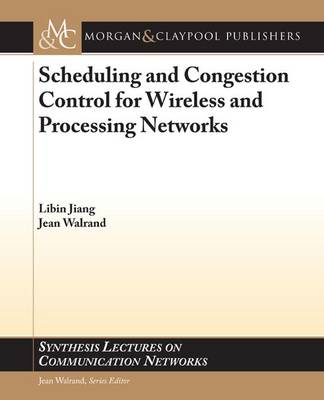Synthesis Lectures on Communication Networks
3 total works
The second edition of "Communication Networks" is designed for junior level engineering and computer science students with no prior knowledge of communication theory and computer networks. It is self-contained and fuses together descriptions of concrete networks with a conceptual understanding of the subject to further student understanding.
Resource Allocation lies at the heart of network control. In the early days of the Internet the scarcest resource was bandwidth, but as the network has evolved to become an essential utility in the lives of billions, the nature of the resource allocation problem has changed. This book attempts to describe the facets of resource allocation that are most relevant to modern networks. It is targeted at graduate students and researchers who have an introductory background in networking and who desire to internalize core concepts before designing new protocols and applications.We start from the fundamental question: what problem does network resource allocation solve? This leads us, in Chapter 1, to examine what it means to satisfy a set of user applications that have different requirements of the network, and to problems in Social Choice Theory. We find that while capturing these preferences in terms of utility is clean and rigorous, there are significant limitations to this choice. Chapter 2 focuses on sharing divisible resources such as links and spectrum. Both of these resources are somewhat atypical -- a link is most accurately modeled as a queue in our context, but this leads to the analytical intractability of queueing theory, and spectrum allocation methods involve dealing with interference, a poorly understood phenomenon. Chapters 3 and 4 are introductions to two allocation workhorses: auctions and matching. In these chapters we allow the users to game the system (i.e., to be strategic), but don't allow them to collude. In Chapter 5, we relax this restriction and focus on collaboration. Finally, in Chapter 6, we discuss the theoretical yet fundamental issue of stability. Here, our contribution is mostly on making a mathematically abstruse subdiscipline more accessible without losing too much generality.
Scheduling and Congestion Control for Wireless and Processing Networks
by Libin Jiang and Jean Walrand
Published 18 August 2010
In this book, we consider the problem of achieving the maximum throughput and utility in a class of networks with resource-sharing constraints. This is a classical problem of great importance. In the context of wireless networks, we first propose a fully distributed scheduling algorithm that achieves the maximum throughput. Inspired by CSMA (Carrier Sense Multiple Access), which is widely deployed in today's wireless networks, our algorithm is simple, asynchronous, and easy to implement. Second, using a novel maximal-entropy technique, we combine the CSMA scheduling algorithm with congestion control to approach the maximum utility. Also, we further show that CSMA scheduling is a modular MAC-layer algorithm that can work with other protocols in the transport layer and network layer. Third, for wireless networks where packet collisions are unavoidable, we establish a general analytical model and extend the above algorithms to that case.
Stochastic Processing Networks (SPNs) model manufacturing, communication, and service systems. In manufacturing networks, for example, tasks require parts and resources to produce other parts. SPNs are more general than queueing networks and pose novel challenges to throughput-optimum scheduling. We proposes a ""deficit maximum weight"" (DMW) algorithm to achieve throughput optimality and maximize the net utility of the production in SPNs.
Stochastic Processing Networks (SPNs) model manufacturing, communication, and service systems. In manufacturing networks, for example, tasks require parts and resources to produce other parts. SPNs are more general than queueing networks and pose novel challenges to throughput-optimum scheduling. We proposes a ""deficit maximum weight"" (DMW) algorithm to achieve throughput optimality and maximize the net utility of the production in SPNs.

